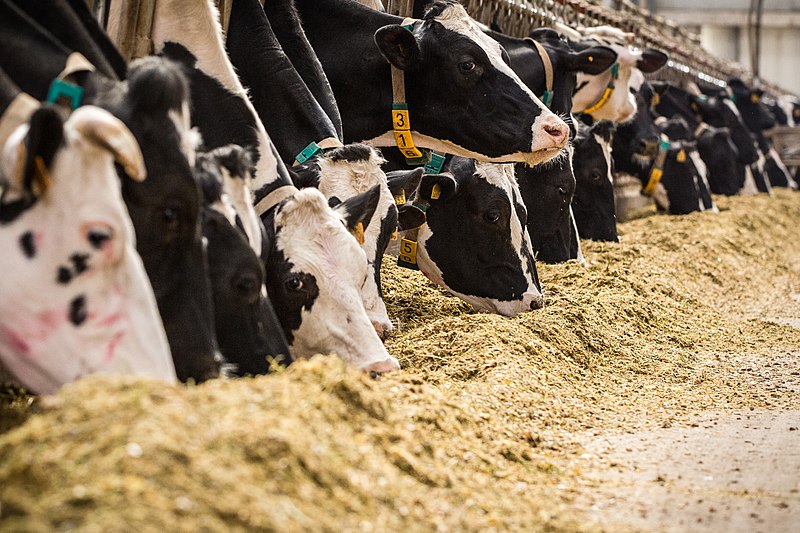The meat industry is certainly global in scale. Not only are meat products imported and exported between countries, but even locally grown and sold products may have a footprint that stretches across continents. A large part of this dynamic concerns the production and transportation of animal feed, a growing market that is worth up to 92 billion USD a year.
Animal feed production and transportation can greatly contribute to the carbon output of the meat industry – which is already intensive in terms of land, water and other resources. A UK based biotech firm is now looking at ways to change, improve and reduce the carbon footprint of this system. In fact, they have developed a way to essentially grow animal feed from thin air.
The firm, Deep Branch, is researching methods in which single-cell proteins (SCP) can be used as a basis for animal feed. SCPs are produced through a fermentation process using yeast, bacteria or algae. The microbes are fed a supply of carbon dioxide and water, with hydrogen being additionally added via an electrolyser. The resulting waste material, which Deep Branch have dubbed ‘Proton’, can then be used as a high-protein animal feed.
The advantage of this system is that production plants could be built anywhere that has access to an available feedstock for the microorganisms, such as methane, ethanol, sugar, biogas or wood. Using this process, Deep Branch estimates carbon emissions from animal feed production could be reduced by as much as 90 percent.
The Environmental Impact of Animal Feed
Currently, much animal feed is soy based, especially in the case of chicken feed. Large scale soy production usually takes place in South America and necessitates forest clearing, large scale use of machinery and fertilisers. The final product is then shipped to farms around the world. Similarly, fishmeal for salmon production often also comes from the Pacific coast of Peru and Chile, before being processed and globally distributed. According to the UN Food and Agriculture Organization, feed production can account for up to 45 percent of the carbon footprint of livestock products globally, while the industry in general is responsible for around 14.5 percent of all greenhouse gas emissions, especially methane.
Furthermore, although meat consumption is starting to decline in some of the most meat-hungry nations, such as Germany, UK and France, globally it is on the rise. Increasing urbanisation and higher wages in Global South countries means meat consumption is increasing at a rate faster than population growth, creating more issues for sustainability in the future.
Biotech firms such as Deep Branch hope SCPs will provide an answer to some of these concerns. However, the industry is not without its drawbacks. Establishing a SCP plant is still prohibitively expensive, with a single one costing in the region of 100 million USD. Furthermore, producing the SCP feed to scale is a key challenge, as is gaining convenient access to the gases needed for the protein production.
Currently, Deep Branch uses industrial emissions for its CO2 feedstock with its UK pilot plant, as well as its “scale-up centre” in the Netherlands. Ultimately, it is hoped CO2 and hydrogen can become important parts of the utility infrastructure of states, providing the gases to SCP plants in a similar way that natural gas is provided to homes.
If SCP production can become scalable and economically viable, it is possible it could also play a more direct role in food production. SCPs could provide additional support to alternative farming techniques such as vertical farming and aquaculture, and could potentially become a human food source itself. Deep Branch described the Proton as relatively flavourless and neutral in terms of colour, meaning it could be used as the basis for a variety of products. Previously, RESET has also covered work in this direction, including vodka distilled in a similar manner, as well as a protein powder.
However, the large scale adoption of SCPs for human consumption may still be far off. Regulatory issues may slow its adoption, as well as consumer aversion to food produced in laboratories. In any case, it is an area that is receiving interest from governments and companies. Deep Branch’s research has received grants from the European Union’s Horizon 2020 EIC Accelerator, as well as support from the Sainbury’s supermarket chain.






